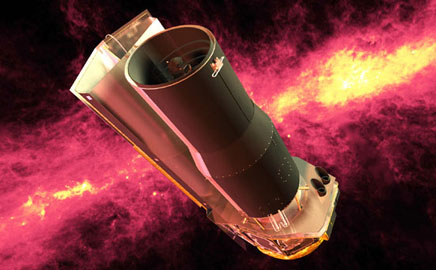|
||||||||||
|
|
||||||||||
|
Since its launch in 2003, the Spitzer Space Telescope has become a premier tool in the quest to characterize exoplanets and the protoplanetary disks where planets are formed.
Spitzer obtains images and spectra by detecting the infrared energy, or heat, radiated by objects in space between wavelengths of 3 and 180 microns (1 micron is one-millionth of a meter). Most of this infrared radiation is blocked by the Earth's atmosphere and cannot be observed from the ground. Consisting of a 0.85-meter telescope and three cryogenically-cooled science instruments, Spitzer is the largest infrared telescope ever launched into space. Its highly sensitive instruments provide a unique view of the universe and allow astronomers to peer into regions of space which are hidden from optical telescopes. The mission is the fourth and final observatory under NASA's Great Observatories program, which also includes the Hubble Space Telescope, Chandra X-Ray Observatory and Compton Gamma Ray Observatory. Recent Spitzer milestones include the first detection of water vapor on an alien world, and creating the first exoplanet weather map.
|
|||||||||||||||||||||||||||||||||||||||||||||||||||
Privacy/Copyright |
Site Map |
Feedback |
Glossary |
Awards & Credits |
For Educators |
For Press |
Widgets |
|
|


